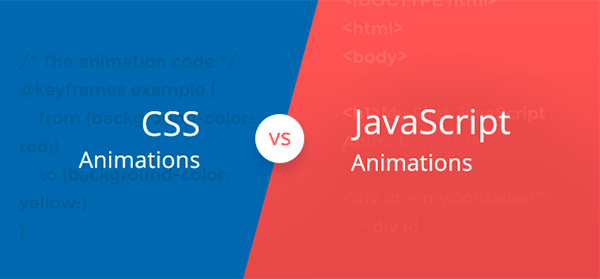Both CSS and JavaScript are widely used by web developers in the market today. However, as a beginner sometimes it is very difficult to know which one is better. In this article based on specific advantages and features we have tried to match JavaScript and CSS neck-and-neck. Both these tools are popular in the circle of developers, however, it is very difficult to determine which can be considered as the best. We have tried to investigate where these two tools, i.e. Java and CSS, overlap and which one is the ultimate winner.
CSS and JavaScript
CSS and JavaScript were once considered as two separate entities altogether. The CSS was more related to the style control of your content and, on the other hand, the JavaScript was more linked to the controlling of behavioral elements on your webpage. However, once the revolution of CSS3 came, things changed drastically. The CSS3 has enabled the developers to easily add text-shadows and rounded corners on your page.
Many people are of the view that behavioral interactions can fall under the domain of the site’s ‘style’, while there are many others who are convinced that CSS should only manage aesthetic styles. Keeping in mind the area of behavior layer, let’s consider the advantages and disadvantages.
Usage Convenience
For non-technical people, it sometimes becomes very difficult to learn JavaScript. The complexity of JavaScript is something which is very difficult to manage for the non-technical folks. Yes, a person may go to a library and read about the language from the internet, however, this surely is not enough. To gain success one needs to understand the language fully. On the other hand, the transitions and animations offered by CSS3 are much simple and easy to implement. All you need to do is to integrate a few short sentences of CSS to get things going for you. So in a nutshell, we can say that in terms of ease of use and simplicity, the CSS3 surely beats the JavaScript.
Extensibility
It requires a lot of understanding if one needs to break the shackles of out of the box methods, however, the point is that with JavaScript there is no box at all! As a user you can establish your control on everything that exists in the DOM through JavaScript. In simple words we can say that JavaScript is more like a tool chest. As opposed to this, the CSS3 serves more like a tool belt. The extensibility potential concludes what has been laid out in the specifications. We are actually limited by whatever the vendors are ready to support. To conclude, we can say that in terms of Extensibility the winner is JavaScript.
Working
The heaps have been improved by the performance of the browser, which means that now more attention has been given to the engines of the JavaScript. The engines today even have reputable brand names, for example, TraceMonkey (Mozilla) and WebKit (SquirrelFish). The IE9 Beta is available in the market with a brand new JavaScript by the name of Chakra.
The support of CSS3 for transitions and animations has been relatively new, which means that this language does not offer benefits like fine-tuning and years of tweaking. This can be understood from an example. The Neutroncreations.com/blog is home to simple atom nuclei with electrons that are orbiting it. In Chrome they have the ability to eat up around 40% of your CPU. If you go to the jQuery Circulate Plugin site you will observe that the site has many animations and only eats up 18% of your CPU. So again we can say that the winner is JavaScript.
Backing
There is widespread support for different animations in the JavaScript Libraries. The libraries even provide support for IE6. In case of CSS3 transactions all the different words and connotations can be used for it, except the term “widespread”. WebKit is there, which means support for Safari and Chrome exists. The JavaScript has a clearcut advantage over CSS3 in terms of backing as well.
The Final Word
The JavaScript will surely survive and will remain a critical tool for developers out there. However, there is also no denying of the fact that CSS3 is also a very useful and handy Tool Belt. In the end things always come down to your clients and their particular needs and wants. Are modern browsers utilized by your customers? Is this the kind of feature which everybody wishes to utilize? Congrats if you are utilizing WebKit! We have seen that most of the CSS3 animations fall in the Fun Category. The developers are mostly dependent on the JavaScript Libraries as far as heavy lifting goes. To read more on the subject, check out this one by Pixeltech.







